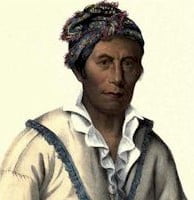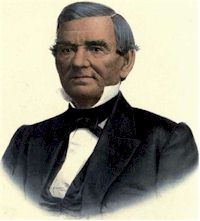An in depth look into the history and origin of the Cherokees of the Smoky Mountains. From the Papers of Horace Kephart.

In the southwestern corner of North Carolina is a band of Cherokee Indians. By a strange streak of fate, they alone, of a once powerful tribe, have been left in possession of a fragment of their ancient realm. They hold what is known as the Qualla boundary, about ninety square miles of rough country on the southerly slope of the Great Smoky Mountains. From time immemorial this natural fastness has been a refuge of their people in case of disaster.
The Cherokees are of Iroquoian stock or affinity, and apparently of northern origin. At some remote period they migrated southwestward along a route long afterward followed by the first white settlers of western Virginia and Carolina. With the high Appalachians as a center and stronghold, they spread over the adjoining lowlands in seven of our present States.
The original nucleus of the tribe, in the South, seems to have been the Kituhwa settlement, near the lower edge of what is now the Qualla boundary, adjoining the site of Bryson City, North Carolina. Their national capitol was Echota, just above the mouth of Tellico River, in southwestern Tennessee.
It was a quest for gold that first led white men into the Cherokee country, and nearly three centuries later it was another gold fever of the whites that wrought the Cherokees’ undoing.
In 1540 the Spanish explorer, Do Soto, came to an Indian town on the lower Savannah that was governed by a woman chief or “queen.” here he was shown implements of copper that appeared to be mixed with precious metal. These, he was told, came from a mountain province on the north.
De Soto seized the Indian queen as a prisoner and compelled her to go with him as a guide. She, however, led him astray over mazy courses and finally made her escape, leaving him in a bare wilderness with his men and horses fairly worn out with hunger
De Soto turned westward crossing “very rough and high ridges,” to the upper waters of the French Broad, thence southerly until he reached some Cherokee settlements, where he was hospitably received. Still no gold was found, and the only treasure that he carried back was a dressed buffalo skin, the first ever seen by white men.
Long before their discovery by Europeans, the Cherokees had developed for themselves the rudiments if civilization. They were not roving hunters but dwelt in villages of log huts and cultivated the soil. They raised corn, beans, potatoes, (probably some variety of sweet potato) squashes and fruits: also practiced various simple industries. Their tribal organization, though looser than the confederacy of the Iroquois, was yet coherent enough for the whites to recognize as the “Cherokee Nation.”
Scotch and Irish traders began to traffic with the Cherokees about the middle of the 17th century. Some of them remained and intermarried with the Indians, gaining much influence over them. Yet whatever tendency such mingling may have had toward bringing the Cherokees into friendly relations with the British was neutralized by the haughty bearing and ruthless policy of the border settlers and provincial governments.
It is a commonplace of history that our own colonists, wherever they encountered Indians, stirred up bad blood and then proceeded to spill it. The French, for the most part only traders, and relatively few in number, were content to let the Indians live their own life in their own way. For this reason the French had little trouble with the natives. The English, on the contrary, came in swarms, with greed of land and a fixed purpose to seize and hold. So it resulted that when war broke out between the French and English (in America), most of the native tribes sided with the New France.
In this crisis the Cherokees found themselves in a pinch between conflicting interests. Their heads really were with the French, but they were constrained to ally themselves with the English for protection against their hereditary foes, the neighboring Indian tribes, who had promptly gone over to the French side.
They were destined to rue the bargain, for they fell out with the English long before the war was over. They were attacked by them and overrun, half their warriors were killed, and the survivors were brought to such extremity by smallpox and starvation that they had to sue for peace on any terms. This involved, of course, large cessions of land.
In spite of this experience the Cherokees again joined sides with England when the struggle came between Colonies and Crown. Their reason was that American frontiersmen had already begun surging westward and taking everything they could hold by force of arms. Tennessee and Kentucky were partly occupied by them. The Cherokees found themselves almost surrounded by whites of a class that regarded red men simply as vermin to be exterminated. Against this encompassing death, England offered them protection.
In the summer of 1776, the Americans quickly mobilized their riflemen and struck at once, in overwhelming force, from four different directions. They destroyed nearly all the Cherokee towns, granaries, orchards, and growing crops; killed or drove off the cattle and horses; slaughtered all Indians who resisted; and scattered the wretched remainder into the wildest recesses of the mountains. Here there was no sustenance but roots, chestnuts, acorns, and such few animals as harbor in those dreary roughs.
It is not nice to recall, but it is naked truth, that our backwoodsmen, regarding the Indians as mere heathen and cumberers of the earth, displayed the same ferocity in fighting them as is shown by savages and by whites gone wild with fanaticism. They slew without regard for age or sex. They scalped the victims, and collected bounties for those scalps from their own governments. They did not consign captives to death by torture, after the Indian fashion, but they coolly murdered the feeble and carried away the strong to be sold into lifelong slavery.
In Col. William Christian’s army of Virginians was a man named Ross, who left a journal of their expedition against the Cherokee towns in western Carolina. In describing a personal encounter during one of the battles, he said
“A stout Indian engaged a sturdy young white man who was a good bruiser and expert at gouging. After breaking their guns on each other they laid hold of one another, when the Cracker had his thumbs instantly in the fellow’s eyes, who roared and cried ‘canaly’—enough, in English. ‘Damn you,’ says the white man, ‘you can never have enough while you are alive.’ He then threw him down, set his foot upon his head, and scalped him alive; then took up one of the broken guns and knocked out his brains. It would have been fun if he had let the latter action alone and sent him home without his nightcap to tell his countrymen how he had been treated.”



Trying to confirm the name “Honeycutt” is on the Cherokee rolls
Can you check name ” Honeycutt” to be on Cherokee rolls.
My mom stayed on the Cherokee res during summers when she was young shes now in her 60s shes atleast half do to her mom being full Cherokee she was not treated well for being a half breed so I have lost all knowledge of my heritage I’m not sure my grandmothers name would my mom be on a roll or list
I am trying to find out if Martha Jane Panther, daughter of John and Mary Panther is on any of the Cherokee Rolls.